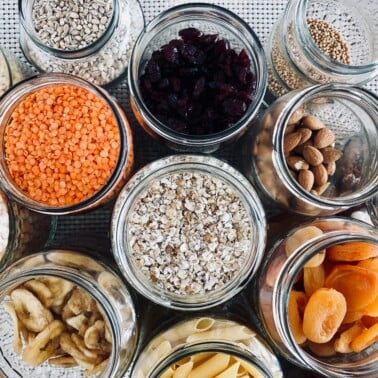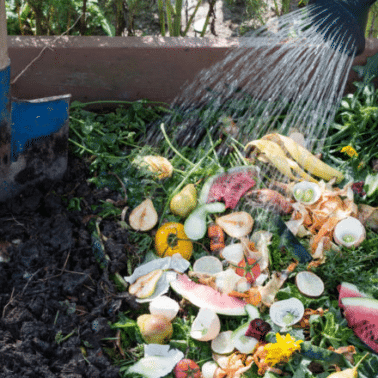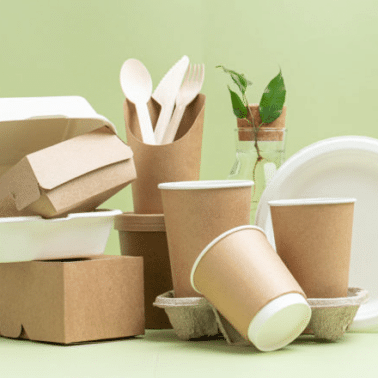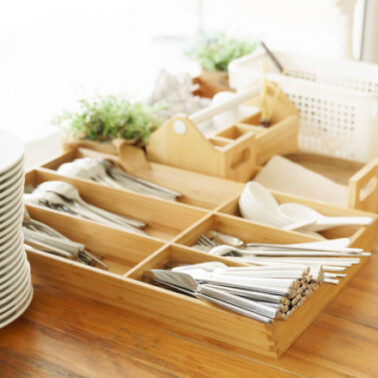What’s a carbon footprint you might ask, and WHY would I need to worry about it? Each person has a carbon footprint that is just the total amount of greenhouse gasses created by your actions. This is everything from driving to appliance usage, where you buy your food from, how often you buy new clothes, air travel, etc. There isn’t a way to have a zero carbon footprint because, of course, we are humans who need to have food, travel around to see our families, turn on our ovens to cook dinner, and buy new gym shoes. So, if we can’t help but create these gasses when we’re living our lives, then why worry about the amount?

The short answer is that curbing our personal carbon footprint helps decrease global carbon output, aka helps mitigate climate change effects!
Climate change can seem like a scary thing staring us in the face, so I’d first like to acknowledge that, and also say that the biggest things that you’ll find if you do a search are things like “don’t have a child” (too late over here!), never fly (maybe possible, but often necessary for connection), or revamp home insulation, which may or not be possible due to budget, or not owning your current residence. For now, we’ll chat about achievable items for everyone.
Three Ways to Limit Your Carbon Footprint
The good news is that little actions done by everyone really do add up, so let’s talk about the little things we can do to reduce our personal and household’s carbon footprints.
- Reduce consumption. This goes across the board for anything that you consume aka purchase, eat, wear, buy, drive.
- Audit purchases. This includes digital, physical items, food, all of it!
- Reduce food waste. We’ll dive deeper into this below.
*Notice recycle isn’t on this list! In general, recycling should be last. It takes energy to recycle, and while we definitely SHOULD recycle items that can be recycled, not everything can, and not everything IS being recycled right now. With every market, there is supply and demand, and 1) there isn’t high demand for old plastic and 2) it’s currently cheaper to make new plastic!

Reduce Consumption
This one is HARD. Always hard for me, especially in the world of social media, Pinterest, one-click ordering, and the list goes on. It’s EASY, but maybe a little too easy? To see something and have that new shiny something in 3-5 business days – or sooner – it’s all too tempting! Here’s a quick checklist to run through before committing to a purchase.
- Do I NEED this thing?
- Do I already own something similar? (Often the case with clothes!)
- Can I borrow or rent it? (formal clothes, one-off appliances, yard tools, specialty kid gear, etc.)
- Can I find it second hand? (Facebook Marketplace, in-person thrift stores, etc.)
- Have I budgeted for this item?
- What is the lifespan for this item? What happens to it after I’ve used it?
Audit Purchases
Auditing our purchases can happen a few different ways. We can physically check bank accounts and receipts from the last few months to find out where our dollars are actually going, AND we can also do a trashcan audit. Finding out where we spend our money and how much we spend is often eye-opening, but I think the truth in the pudding is the trash audit. Ok, we’ve brought these things into our home, but now what are we sending to landfill? Is there anything that could be recycled, reused, or repurposed into something else? I find often my kids will take items I think are trash and turn them into a craft of some sort. Is there food waste where we could improve grocery shopping (also helps budget!)? What about packaging for items we could find package-free or in a more easily recyclable/compostable container?

Reduce Food Waste
The sexiest for last – food waste. Every person in the United States wastes about 219 pounds of food PER YEAR. The problem here is multi-faceted (economically, environmentally, financially for the household itself – about $370 per person in food costs), but we’ll just look at this from a personal perspective. For the food that we buy that doesn’t get a loving home in our tummies and instead wilts or rots in the back of the fridge, there is an environmental cost. Here’s what goes into getting that food grown and to you, and thereby wasted by it not being consumed: water and energy to grow, transport, store, label, market, and sell each item. Energy that’s wasted is human energy, think of farm workers sowing seeds, harvesting, and packing crates, etc., AND fuel to do all of those activities as well.
Now here’s the kicker on food waste: we tend to think, no biggie, banana peels and egg shells will just biodegrade, and if we toss them in the garbage or out in the yard, it’s about the same, but y’all this one is a big nope. For food waste to break down it needs certain conditions – air flow and microbes that survive on oxygen. A landfill is lots of plastic bags all on top of each other. No microorganisms or soil to help break down any organic matter, so instead food rots. When food rots, it releases methane into the atmosphere, which is more potent than carbon dioxide. There are MANY ways we can improve our impact on the environment with food choices. Buying less, using what we have, compost instead of landfill, and supporting companies with programs in place to reduce their own food loss/waste in supply chain, production, and down to distribution.
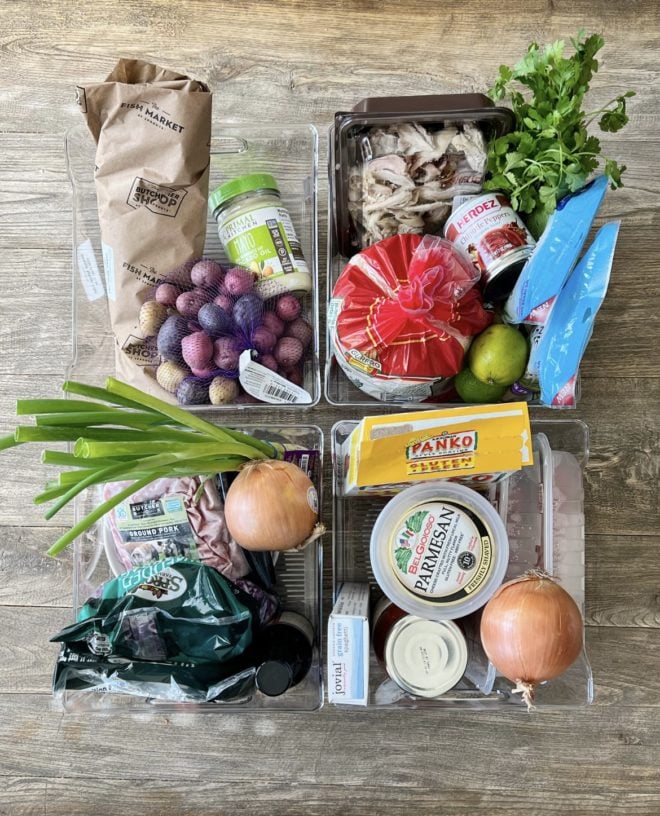
The best way I’ve found to decrease food waste for my own family is to meal plan. There are so many amazing plans on the Fed & Fit site, in both Cook Once books, and around every corner you search on the internet. I think the key here is using someone else’s template as a starting point, but then adjusting for how your family really eats. There’s no point in planning seven at home, hands-on dinners when you have soccer practice two nights a week and schedule in a weekly date night with your partner. Know your strengths and your weak points here. I hate being boxed in by a strict meal plan for the week or month, so I come up with a looser plan that can be modified when I change my mind or something comes up last minute. Keeping a flexible plan where leftovers turn into something else and sides can be mixed and match is how I keep my sanity and healthy food on the table for my family of five.
Just for You
Sustainability Articles
Want to broaden your knowledge of sustainability?
